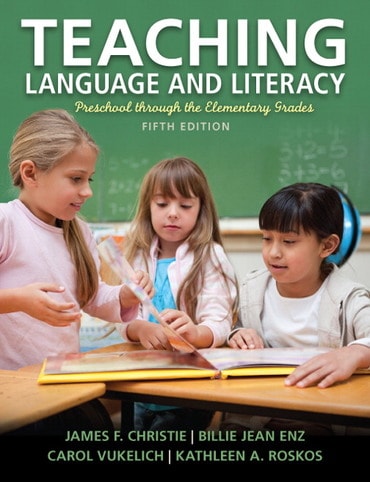Switch content of the page by the Role togglethe content would be changed according to the role
Teaching Language and Literacy: Preschool Through the Elementary Grades, 5th edition
Published by Pearson (April 23, 2013) © 2014
- James Christie
- Carol Vukelich University of Delaware
- Billie Enz
- Kathleen A. Roskos John Carroll University
$149.32
Need help? Get in touch

Digital Learning NOW
Extend your professional development and meet your students where they are with free weekly Digital Learning NOW webinars. Attend live, watch on-demand, or listen at your leisure to expand your teaching strategies. Earn digital professional development badges for attending a live session.
